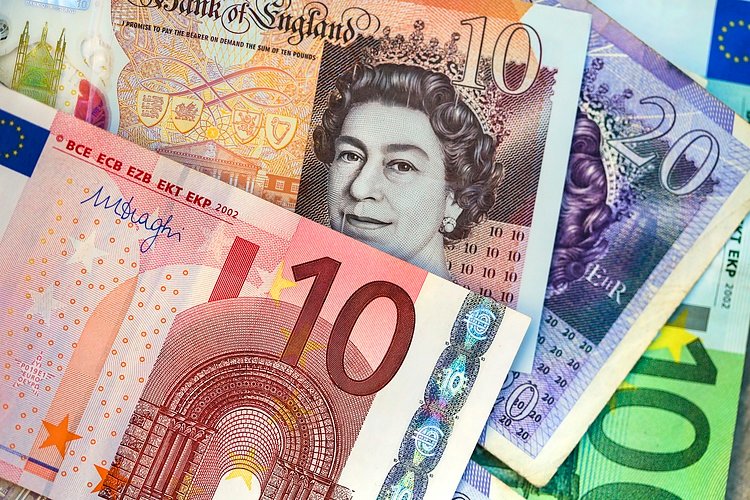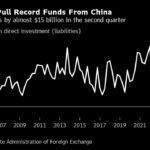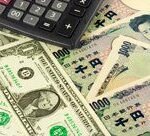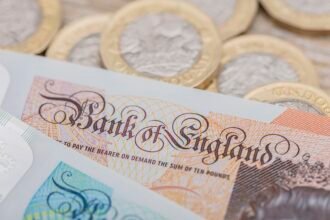- EUR/GBP trades in negative territory for the fourth consecutive day around 0.8550 in Monday’s early European session.
- Bloomberg economists see the ECB cut its deposit rate once a quarter through the end of next year.
- The UK labor market data on Tuesday will be in the spotlight.
The EUR/GBP cross extends its decline to near 0.8550 during the early European session on Monday. The anticipation of the easing cycle ending sooner than previously anticipated by the European Central Bank (ECB) drags the Euro (EUR) lower. However, traders will keep an eye on the UK employment report for fresh catalysts, which is due on Tuesday.
The ECB is likely to cut its deposit rate once a quarter through the end of next year, according to Bloomberg economists. The sooner-than-previously-expected rate cuts from the ECB exert some selling pressure on the shared currency against the Pound Sterling (GBP). A Bloomberg survey of forecasters indicated that the benchmark is expected to reach 2.25% in December 2025 after six straight quarter-point declines. Previously, respondents projected that this level would be achieved in the second quarter of 2026.
On the GBP’s front, traders bet on two more rate cuts by the Bank of England (BoE) in 2024. The next monetary policy meeting is scheduled for September 19, and the market sees a 40% chance of a cut. The UK labor market data Tuesday could offer some hints about the UK economy and further rate path.
The UK Unemployment rate is expected to tick higher to 4.5% in June. Average weekly earnings ex-bonuses are expected to fall for the three months ended in June to 5.4% YoY. Including bonuses, total earnings are expected to fall to 4.6%YoY. The slower-than-expected wage growth will keep the BoE in easing mode, which will continue to undermine the GBP and cap the cross’s downside.
Pound Sterling FAQs
The Pound Sterling (GBP) is the oldest currency in the world (886 AD) and the official currency of the United Kingdom. It is the fourth most traded unit for foreign exchange (FX) in the world, accounting for 12% of all transactions, averaging $630 billion a day, according to 2022 data. Its key trading pairs are GBP/USD, aka ‘Cable’, which accounts for 11% of FX, GBP/JPY, or the ‘Dragon’ as it is known by traders (3%), and EUR/GBP (2%). The Pound Sterling is issued by the Bank of England (BoE).
The single most important factor influencing the value of the Pound Sterling is monetary policy decided by the Bank of England. The BoE bases its decisions on whether it has achieved its primary goal of “price stability” – a steady inflation rate of around 2%. Its primary tool for achieving this is the adjustment of interest rates. When inflation is too high, the BoE will try to rein it in by raising interest rates, making it more expensive for people and businesses to access credit. This is generally positive for GBP, as higher interest rates make the UK a more attractive place for global investors to park their money. When inflation falls too low it is a sign economic growth is slowing. In this scenario, the BoE will consider lowering interest rates to cheapen credit so businesses will borrow more to invest in growth-generating projects.
Data releases gauge the health of the economy and can impact the value of the Pound Sterling. Indicators such as GDP, Manufacturing and Services PMIs, and employment can all influence the direction of the GBP. A strong economy is good for Sterling. Not only does it attract more foreign investment but it may encourage the BoE to put up interest rates, which will directly strengthen GBP. Otherwise, if economic data is weak, the Pound Sterling is likely to fall.
Another significant data release for the Pound Sterling is the Trade Balance. This indicator measures the difference between what a country earns from its exports and what it spends on imports over a given period. If a country produces highly sought-after exports, its currency will benefit purely from the extra demand created from foreign buyers seeking to purchase these goods. Therefore, a positive net Trade Balance strengthens a currency and vice versa for a negative balance.





















